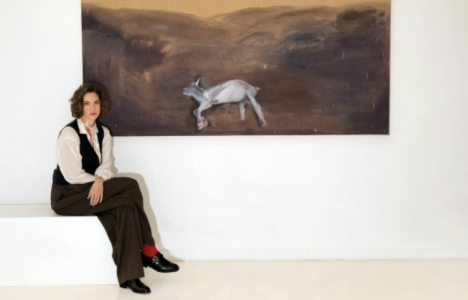Learn about the surprising ways emotions like fear, love, and shame affect different parts of your body!
- Replies 0
Emotions are the universal language of the human experience, capable of transcending time, culture, and language. They color our perceptions, shape our interactions, and even manifest physically within our bodies.
But have you ever stopped to consider exactly how emotions like fear, love, and shame resonate within you? Scientists have delved into this intriguing subject, revealing the fascinating ways our bodies respond to the complex tapestry of human emotions.
Imagine a canvas where each brushstroke represents a different feeling, painting a vivid picture of human emotion. This is essentially what researchers have done by creating maps that illustrate how our bodies react to 14 common emotions.
From the warm, all-encompassing glow of happiness to the cold, numbing touch of depression, each emotion leaves its unique imprint.
The study, published in the Proceedings of the National Academy of Sciences in 2013, involved participants reflecting on specific emotions and then indicating areas of heightened or reduced sensation on a blank silhouette.
While individual responses varied, the averaged maps revealed distinct patterns for each emotion.

For instance, happiness and love were shown to activate nearly the entire body, while fear concentrated its intense energy in the chest, priming us for fight or flight.
Anger, on the other hand, seemed to surge through the arms and hands, perhaps preparing us for a confrontational response.
But how have these physical experiences of emotions evolved over time?
To explore this question, researchers embarked on a historical journey, analyzing over one million words from ancient Mesopotamian texts dating back to between 934 and 612 BC.
These texts provided a window into the emotional lives of our ancestors, revealing both similarities and stark differences in how they felt emotions in their bodies.
For example, while modern individuals might feel happiness in their chest, ancient Mesopotamians associated this emotion with a “glow in the liver.”
Anger, which we often feel in our upper body and hands, was described as a sensation in the feet by these ancient civilizations.
The study, published in the journal iScience in December, suggests that the physical manifestations of emotions are not static but have shifted over time.
Even love, which today is felt as a full-body sensation, was more localized to the liver, heart, and knees in ancient times.
These findings raise intriguing questions about the nature of human emotion and its evolution.
As lead author Saana Svärd, an expert in ancient Mesopotamia at the University of Helsinki, points out, it's challenging to determine whether certain emotional experiences are typical for humans in general or if they have always been felt in the same parts of the body.
Moreover, the researchers emphasize the importance of distinguishing between the linguistic descriptions found in ancient texts and the self-reported bodily experiences used to create modern body maps.
Texts capture the language of emotion, while body maps reflect the lived, felt experience.
Also read: Discover the military's secret breath technique to instantly calm your nerves

Have you noticed certain physical sensations associated with different emotions? How do you think understanding the physical aspects of emotions can benefit our daily lives? Share your insights and stories in the comments below!
But have you ever stopped to consider exactly how emotions like fear, love, and shame resonate within you? Scientists have delved into this intriguing subject, revealing the fascinating ways our bodies respond to the complex tapestry of human emotions.
Imagine a canvas where each brushstroke represents a different feeling, painting a vivid picture of human emotion. This is essentially what researchers have done by creating maps that illustrate how our bodies react to 14 common emotions.
From the warm, all-encompassing glow of happiness to the cold, numbing touch of depression, each emotion leaves its unique imprint.
The study, published in the Proceedings of the National Academy of Sciences in 2013, involved participants reflecting on specific emotions and then indicating areas of heightened or reduced sensation on a blank silhouette.
While individual responses varied, the averaged maps revealed distinct patterns for each emotion.

Scientists have developed maps that illustrate how different emotions affect specific areas of the body. Image source: Gino Crescoli / Pixabay.
For instance, happiness and love were shown to activate nearly the entire body, while fear concentrated its intense energy in the chest, priming us for fight or flight.
Anger, on the other hand, seemed to surge through the arms and hands, perhaps preparing us for a confrontational response.
But how have these physical experiences of emotions evolved over time?
To explore this question, researchers embarked on a historical journey, analyzing over one million words from ancient Mesopotamian texts dating back to between 934 and 612 BC.
These texts provided a window into the emotional lives of our ancestors, revealing both similarities and stark differences in how they felt emotions in their bodies.
For example, while modern individuals might feel happiness in their chest, ancient Mesopotamians associated this emotion with a “glow in the liver.”
Anger, which we often feel in our upper body and hands, was described as a sensation in the feet by these ancient civilizations.
The study, published in the journal iScience in December, suggests that the physical manifestations of emotions are not static but have shifted over time.
Even love, which today is felt as a full-body sensation, was more localized to the liver, heart, and knees in ancient times.
These findings raise intriguing questions about the nature of human emotion and its evolution.
As lead author Saana Svärd, an expert in ancient Mesopotamia at the University of Helsinki, points out, it's challenging to determine whether certain emotional experiences are typical for humans in general or if they have always been felt in the same parts of the body.
Moreover, the researchers emphasize the importance of distinguishing between the linguistic descriptions found in ancient texts and the self-reported bodily experiences used to create modern body maps.
Texts capture the language of emotion, while body maps reflect the lived, felt experience.
Also read: Discover the military's secret breath technique to instantly calm your nerves
Key Takeaways
- Scientists have developed maps that illustrate how different emotions affect specific areas of the body, with happiness and love impacting nearly the entire body, while fear and anger have more localised effects.
- The research, published in the Proceedings of the National Academy of Sciences in 2013, involved participants painting areas of stimulation and de-stimulation on silhouettes when thinking about various emotions.
- A recent study compared the bodily maps of emotions from modern individuals to descriptions found in ancient Mesopotamian texts, revealing some differences in how emotions were experienced physically across time.
- Findings show that perceptions of where in the body emotions are felt have evolved, with notable differences such as happiness being associated with the liver and anger with the feet in ancient times, in contrast to modern sensations in the chest and hands for happiness and the upper body and hands for anger.
Have you noticed certain physical sensations associated with different emotions? How do you think understanding the physical aspects of emotions can benefit our daily lives? Share your insights and stories in the comments below!






